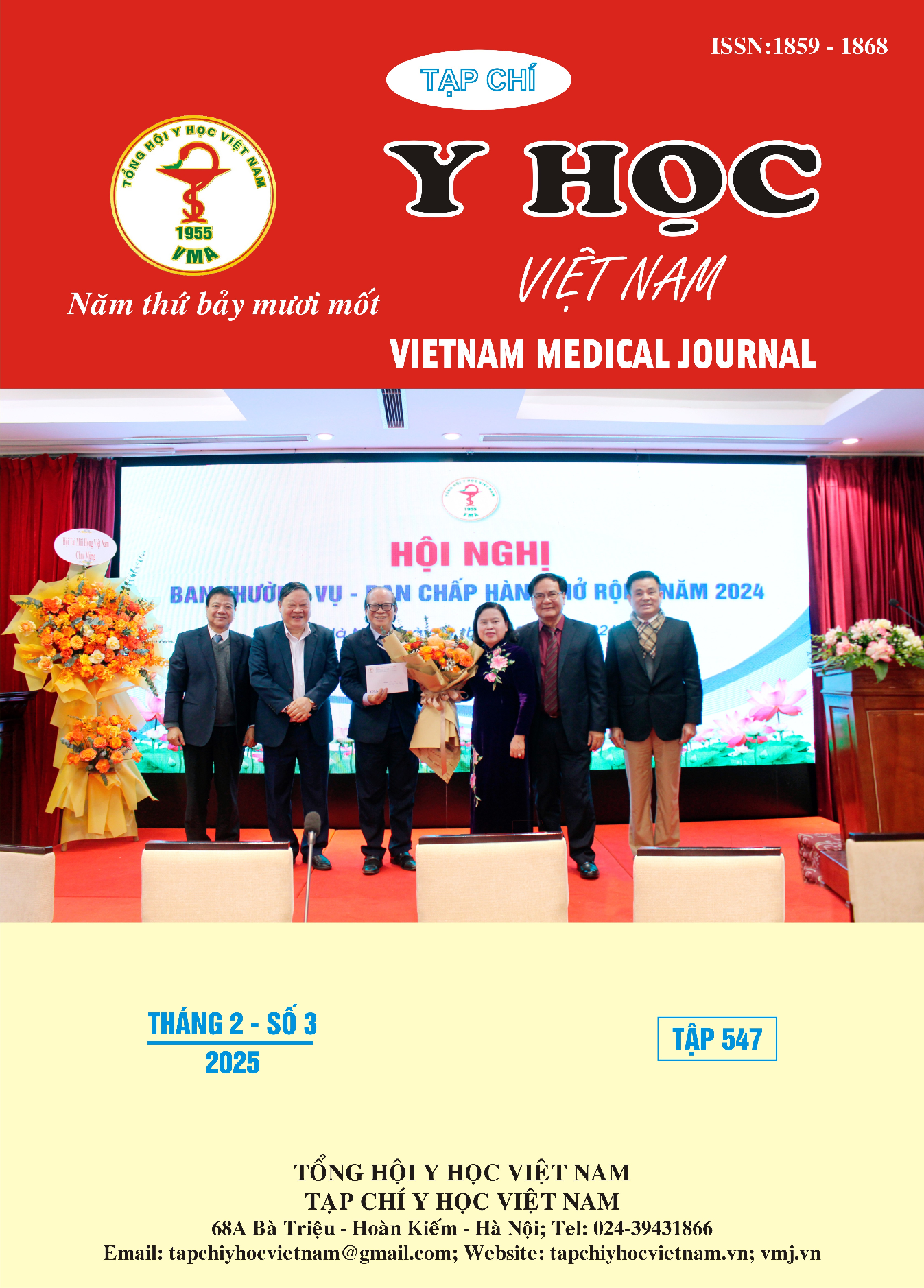INVESTIGATION OF FACTORS ASSOCIATED WITH COMPLICATION RATES FOLLOWING MINI-PERCUTANEOUS NEPHROLITHOTOMY FOR KIDNEY STONE TREATMENT BASED ON THE CLAVIEN–DINDO CLASSIFICATION
Main Article Content
Abstract
Objective: To investigate factors associated with complication rates following mini-percutaneous nephrolithotomy for kidney stones, classified by the Clavien–Dindo system, at Xanh Pon Hospital from 2023 to 2024. Methods: A cross-sectional descriptive study was conducted on 830 patients with kidney stones treated by mini-percutaneous nephrolithotomy at Xanh Pon Hospital. Early postoperative complication rates and associated factors were assessed. Results: The mean age was 50.6 ± 6.9 years; the male-to-female ratio was 65.3% male and 34.7% female. The mean BMI was 29.2 ± 8.5. The average stone size on CT was 24.5 ± 9.8 mm. Stone count distribution was as follows: 27.8% had a single stone, 11.3% had two stones, and 60.8% had three or more stones. Stone locations were 50.7% in the renal pelvis, 9.6% in the lower calyx, 13.5% in the upper calyx, 21.7% in multiple locations, and 4.5% as staghorn stones. Degree of hydronephrosis was classified as no dilation in 86.3%, grade I in 5.8%, grade II in 6.0%, and grade III in 1.9%. According to the Clavien–Dindo classification, 95.4% (792/830) of patients experienced no complications, 2.7% had grade I complications, 1.7% had grade II complications, and two patients (0.2%) had grade III complications. No correlation was found between complication rates and BMI, stone count, stone size, or stone location. Conclusions: Mini-percutaneous nephrolithotomy is a minimally invasive procedure with a low rate of early postoperative complications, most of which are mild. Factors such as BMI, stone count, stone size, and stone location were not associated with the incidence of postoperative complications.
Article Details
References
2. Lê Mạnh Hùng, Barbe Y.P (2018), “Nội soi thận qua da điều trị sỏi san hô: 10 năm kinh nghiệm của Bệnh viện Việt Pháp Hà Nội”, Y học TP. Hồ Chí Minh, tập 16, phụ bản số 3, 249-254.
3. Kiều Đức Vinh, Trần Các, Trần Đức (2015), “Kết quả phẫu thuật lấy sỏi thận qua da tại bệnh viện 108”, Y học TP. Hồ Chí Minh, số 4, 111-116.
4. Nguyễn Minh Thiền, Lê Tuấn Khuê, Phạm Thế Anh (2015), “Tán sỏi thận qua da bằng kim nhỏ (Microperc) thực hiện tại Medic”, Y học TP. Hồ Chí Minh, số 4,105-110.
5. Daniel Dindo, Nicolas Demartines, Pierre-Alain Clavien (2004). “Classification of Surgical Complications A New Proposal With Evaluation in a Cohort of 6336 Patients and Results of a Survey”. Ann Surg, 240(2), 205–213,
6. Wei-Hong Lai, Yeong-Chin Jou, Ming-Chin Cheng, et al (2017). “Tubeless percutaneous nephrolithotomy: Experience of 1000 cases at a single institute”. Urological Science, 28, 23-26.
7. Shah HN, Sodha HS, Khandkar AA, et al (2015). “A randomized trial evaluating type of nephrostomy drainage after percutaneous nephrolithotomy: Small bore v tubeless”. J Endourol, 22, 1433–9.
8. Shun‑Kai Chang, Ian‑Seng Cheong, Ming‑Chin Cheng, Yeong‑Chin Jou, Chia‑Chun Chen, Min‑Min Hu (2015). “Pressure compression of the cccess tract for tubeless percutaneous nephrolithotomy”. Urol Sci, 30, 19-23.


